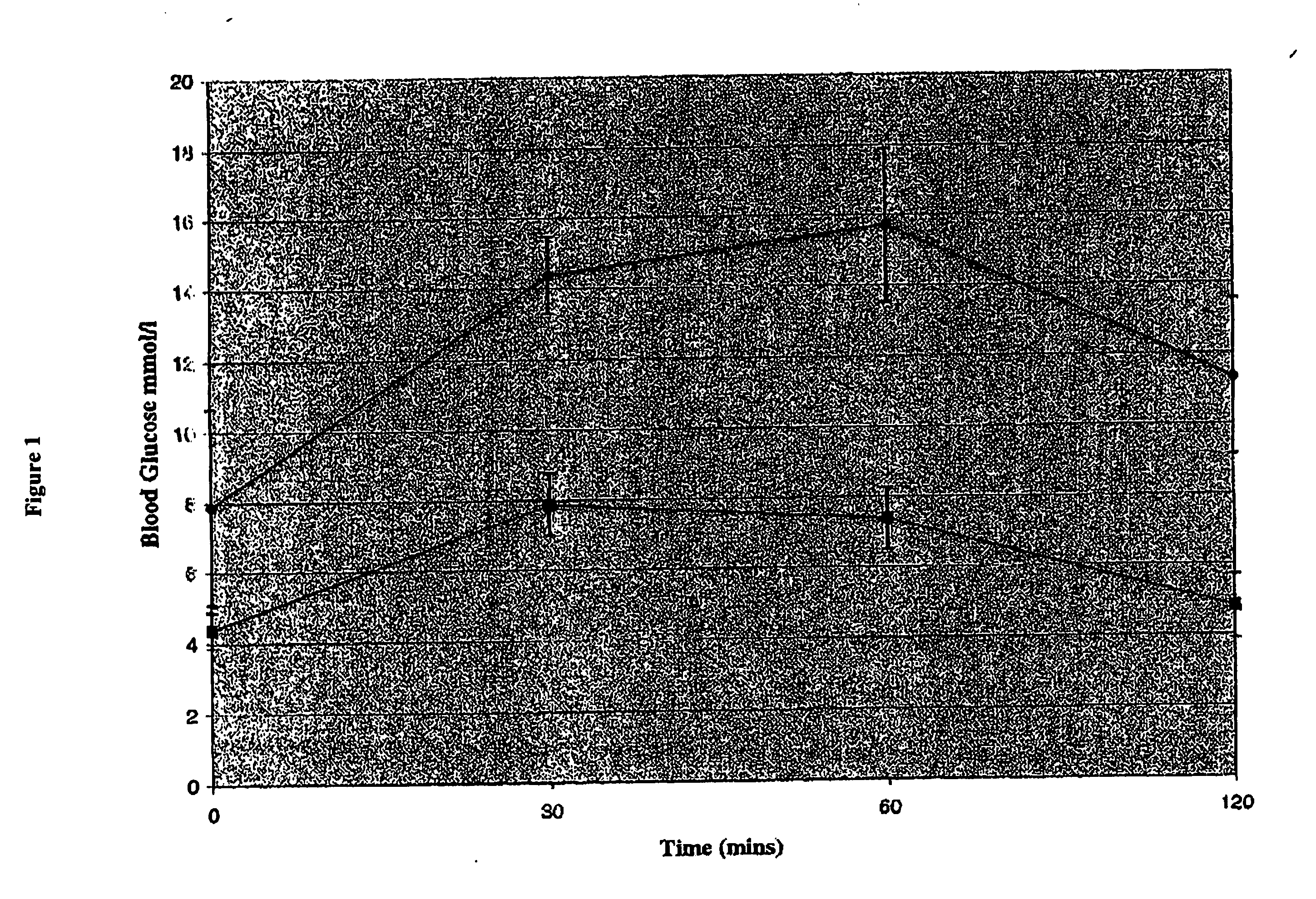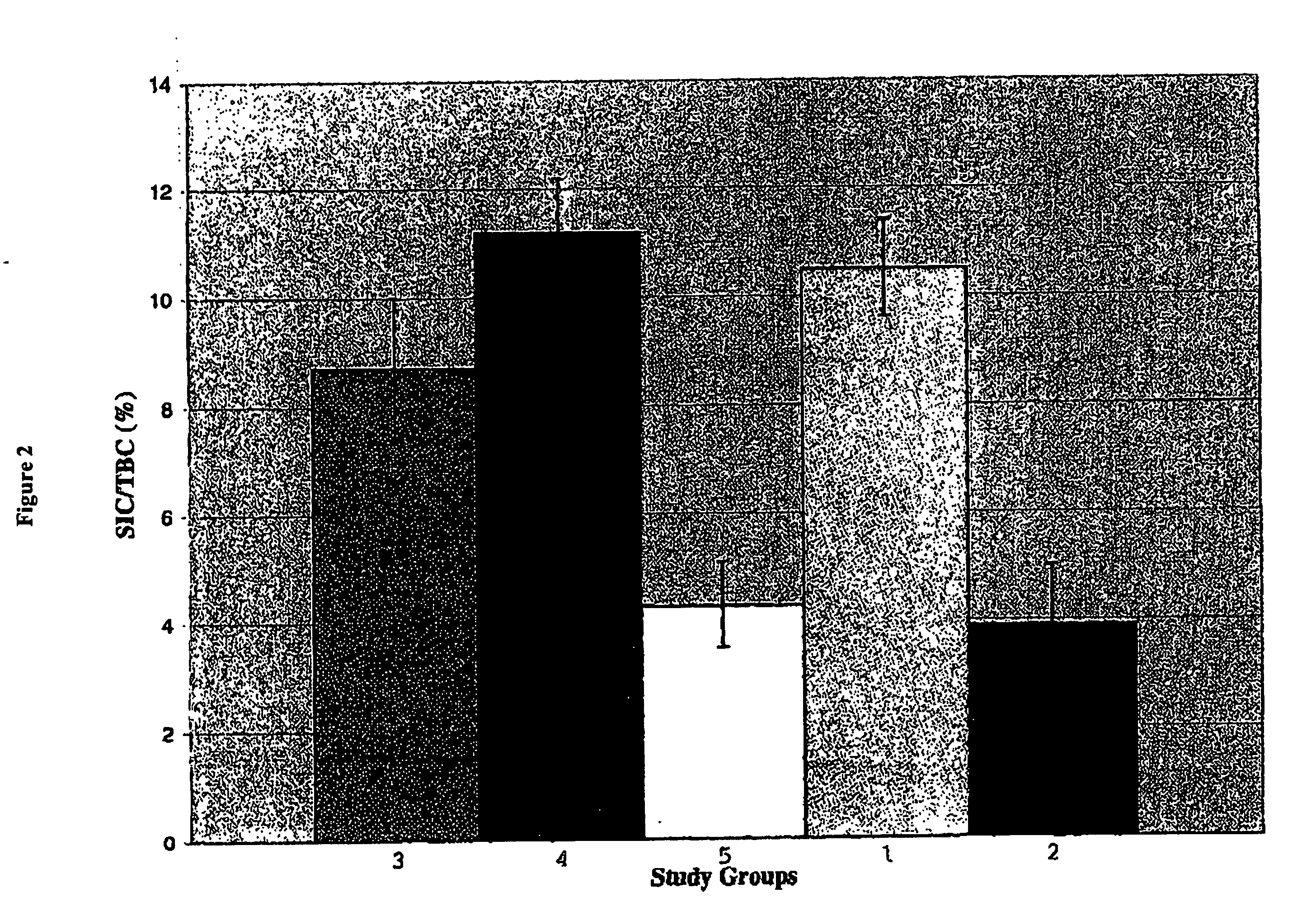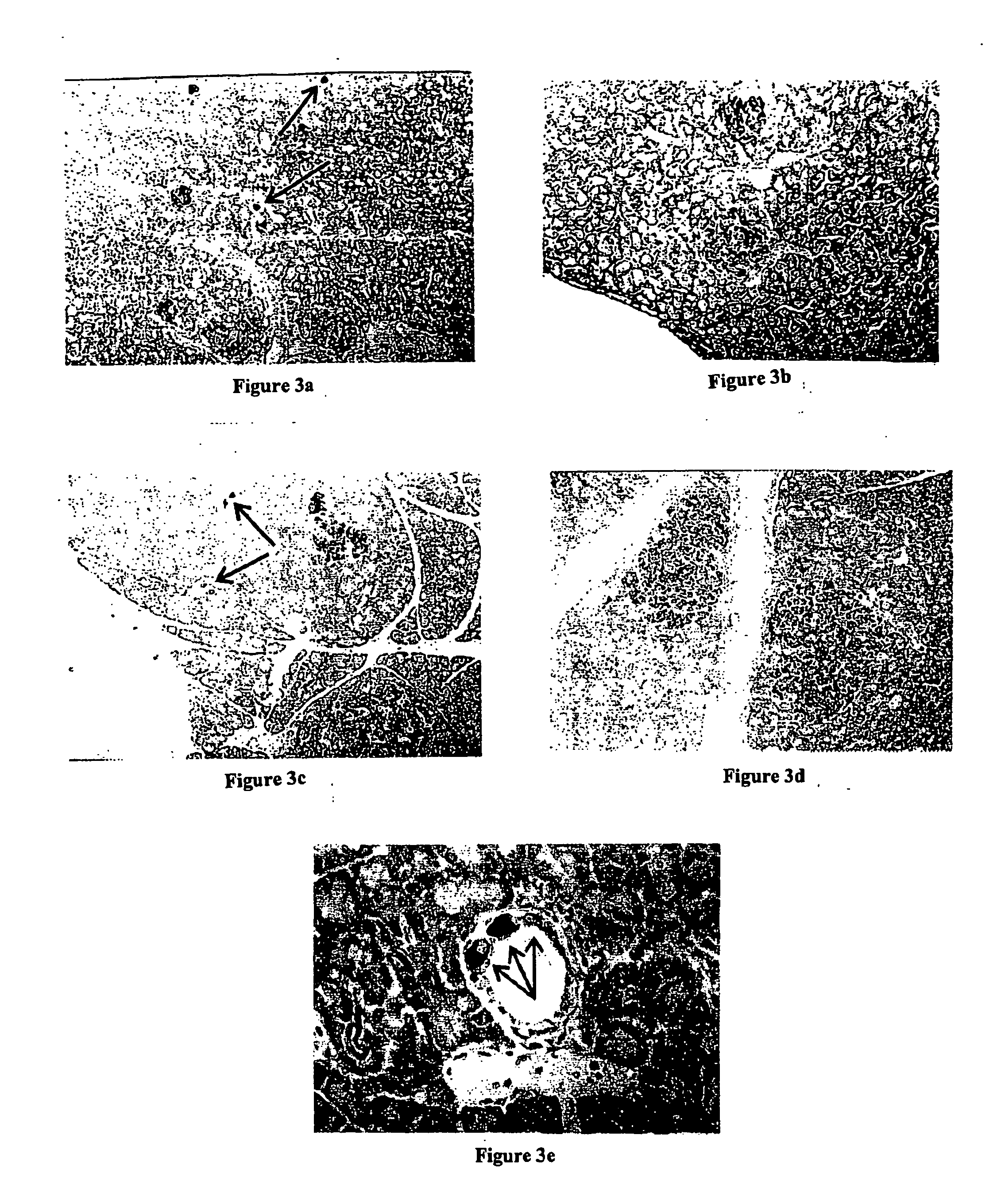Treatment for diabetes
a technology of pancreatic islet and cell biology, applied in the field of treatment for diabetes, can solve the problems of difficult control of the progressive nature of the disease mechanism operating in type 2 diabetes, the economic cost of diabetes is huge, and the prevalence of diabetes, so as to stimulate the proliferation of precursor cells and stimulate the regeneration of islet cells and/or neogenesis
- Summary
- Abstract
- Description
- Claims
- Application Information
AI Technical Summary
Benefits of technology
Problems solved by technology
Method used
Image
Examples
example 1
Effects of In Vivo Treatment with TGF-α and Gastrin on Pancreatic Insulin Content in Normal Rats
[0068] This experiment was designed to study the effects on pancreatic insulin content in non-diabetic animals treated with TGF-α, a gastrin, or a combination of TGF-α and a gastrin as compared to control animals (untreated). Groups (n=5) of normal Wistar rats were assigned to one of the following four treatment groups. [0069] Group I: TGF-α: recombinant Human TGF-α was reconstituted in sterile saline containing 0.1% BSA and was administered i.p. at a dose of 0.8 μg / day for 10 days. [0070] Group II: Gastrin: synthetic Rat Gastrin I was dissolved in very dilute ammonium hydroxide and reconstituted in sterile saline containing 0.1% BSA. It was administered i.p. at a dose of 0.8 μg / day for 10 days. [0071] Group III: TGF-α+Gastrin: a combination of the above preparations was administered i.p. at the dose levels given above for 10 days. [0072] Group IV: Control animals received an i.p. inject...
example 2
Effect of In Vivo Treatment with a Combination of TGF-α and Gastrin on Pancreatic Insulin Content in Diabetic Animals
[0075] This experiment was designed to determine whether the combination of TGF-α and gastrin could increase pancreatic insulin content in diabetic animals (streptozotocin (STZ) treated) to levels comparable to those in normal (non-STZ treated) animals.
[0076] Normal Wistar rats received a single I.V. injection of STZ at a dose of 80 μg / Kg body weight. This dose of STZ was intended to ensure that the study animals were rendered diabetic but that they retained a functioning but reduced β-cell mass. The STZ was dissolved immediately before administration in ice-cold 10 mM citric acid buffer. The animals were monitored daily; persistent diabetes was indicated by glycosuria and confirmed by non-fasting blood glucose determinations. One week after induction of diabetes, rats were randomly allocated into two groups (n=6) as follows. [0077] Group I: TGF-α+Gastrin: STZ diabe...
example 3
Effects of In Vivo Treatment with TGF-α and Gastrin on IPGTT in STZ-Induced Diabetic Animals
[0082] Two groups (average body weight 103 g) of STZ induced diabetic Wistar rats (n=6 / group) were treated for 10 days with a daily i.p. injection of either a combination of TGF-α and gastrin or PBS. Fasting blood glucose was determined for all rats on days 0, 6, and 10. In order to establish that this insulin was both secreted and functional, IPGTT tests were performed. At day 10, intraperitoneal glucose tolerance tests (IPGTT) were performed following an overnight fast. Blood samples were obtained from the tail vein, before and 30, 60 and 120 minutes after administration of an i.p. glucose injection at a dose of 2 g / kg body weight. Blood glucose determinations were performed as above. The blood glucose levels were similar in both study groups at time 0 but the TFGα and gastrin treated rats demonstrated a 50% reduction in blood glucose values (FIG. 1), as compared to control rats at 30, 60,...
PUM
| Property | Measurement | Unit |
|---|---|---|
| body weight | aaaaa | aaaaa |
| body weight | aaaaa | aaaaa |
| body weight | aaaaa | aaaaa |
Abstract
Description
Claims
Application Information
 Login to View More
Login to View More - R&D
- Intellectual Property
- Life Sciences
- Materials
- Tech Scout
- Unparalleled Data Quality
- Higher Quality Content
- 60% Fewer Hallucinations
Browse by: Latest US Patents, China's latest patents, Technical Efficacy Thesaurus, Application Domain, Technology Topic, Popular Technical Reports.
© 2025 PatSnap. All rights reserved.Legal|Privacy policy|Modern Slavery Act Transparency Statement|Sitemap|About US| Contact US: help@patsnap.com



